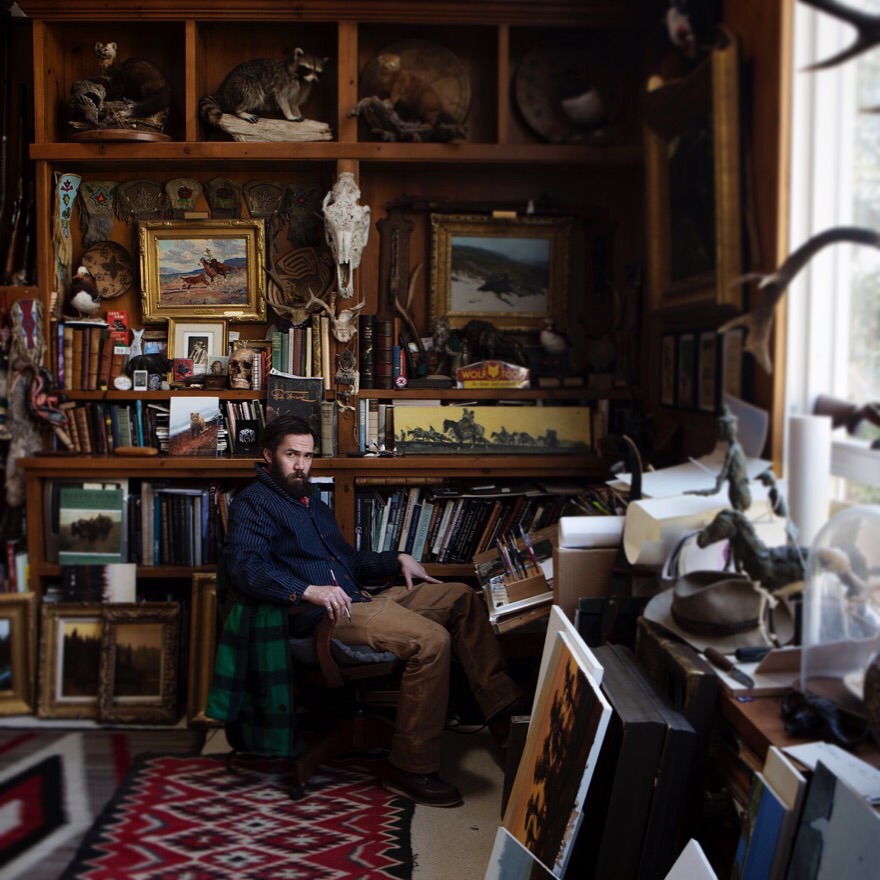For most artists, the studio is more than simply a workspace. Whatever it takes — and this differs from one artist to another — the studio is outfitted to nurture creativity. It might be pared down to the basics — materials only — or an artist may prefer to work amidst a clutter of things comforting and inspirational.
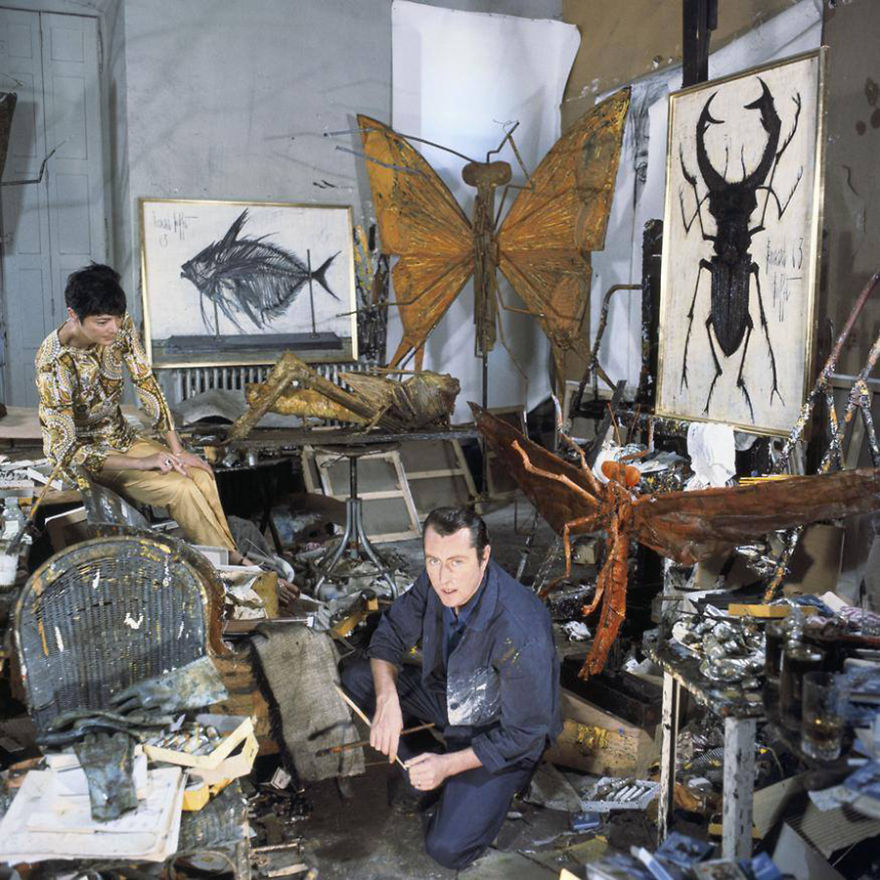
Bernard Buffet in his studio 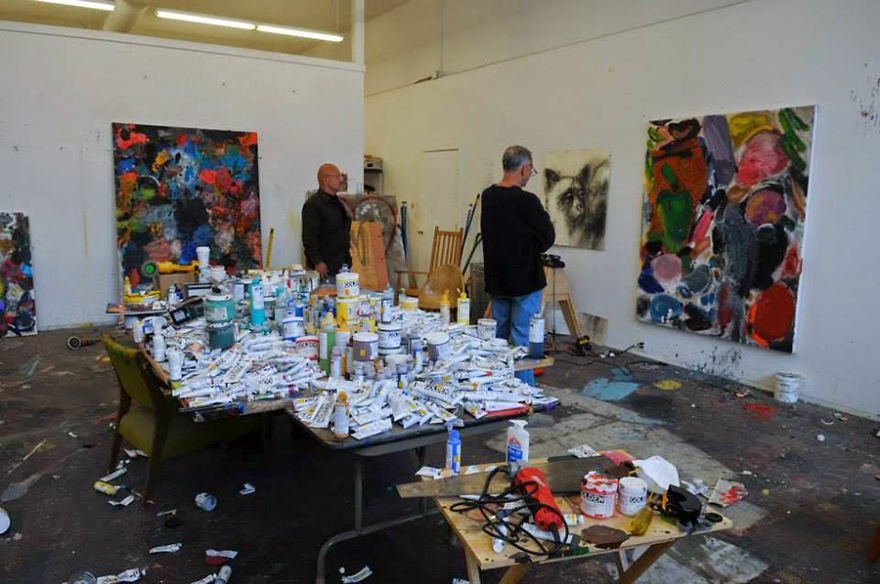
Jim Dine in his studio 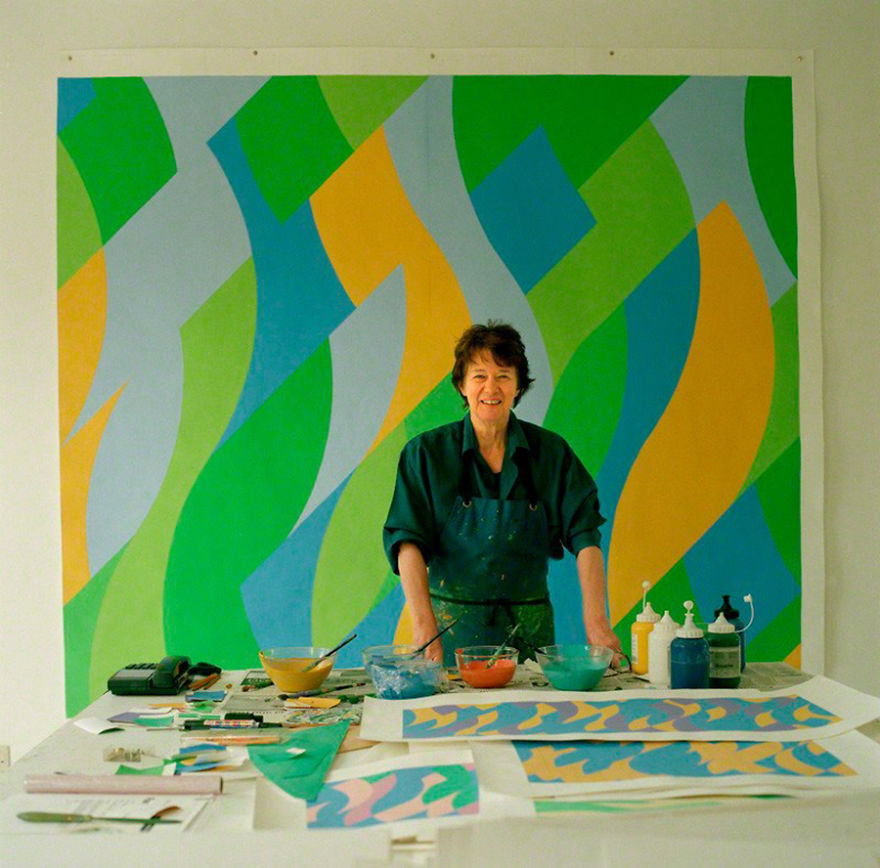
Bridget Riley in her studio
Studios run the gamut from back bedrooms and basements, to garden sheds and garages, to renovated warehouses, lofts and purpose-built spaces. An artist’s workspace depends as much on his/her resources as it does on creative process requirements. I don’t know of an artist who hasn’t dreamt of the perfect studio space – and I’ve seen the joy and inspired productivity that comes with achieving something close to that dream.
I had been contemplating the subject of artist’s studios when I coincidentally came across a program at the New Museum in Los Gatos CA, called In the Artist’s Studio – a recurring exhibition program that focuses on studio practices, processes, techniques and creative problem-solving. The curatorial idea arose from the realization that most people do not have the opportunity to visit an artist’s studio, to get close to the creativity and conceptual intelligence that goes into the art-making process. The current iteration features Luz Donahue (Feb 4 – June 26, 2022).

Further on in this article: A complete list of artist home- and studio-museums across the US.
Information links are included. All are open to visitors.
Giorgio Morandi (Italian, 1890–1964) is known for his still lifes — serene studies in compositional rhythm and restrained chromatics. He lived in the same apartment in Bologna his entire life, continuing to share it with his three sisters after their mother’s death, and for 50 years he worked in a tiny studio adjoining his bedroom. He didn’t need much space: he worked small, and he sourced his studio props from the kitchen and secondhand shops. He also painted “landscapes” based on what he could see from his studio window.
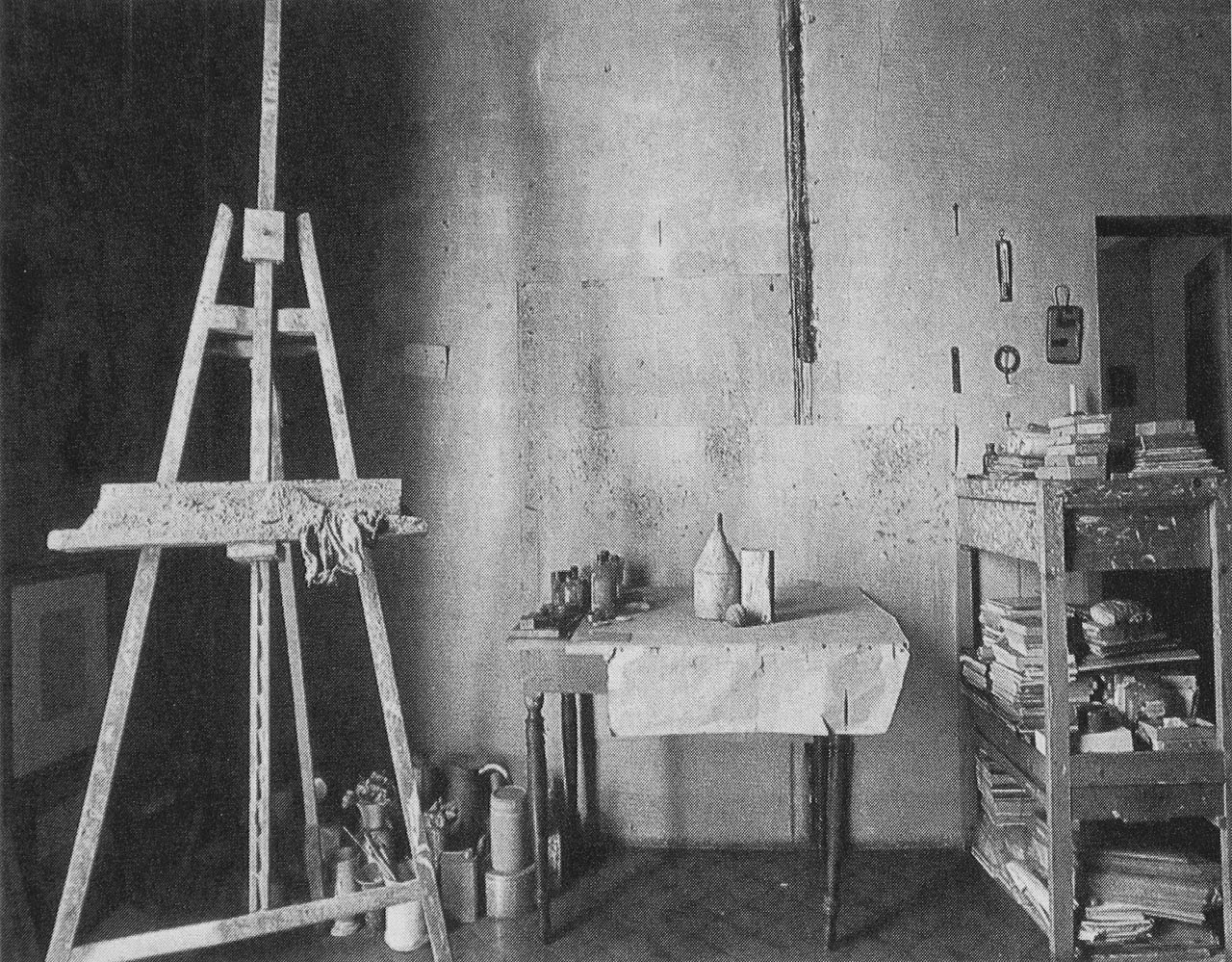
Giorgio Morandi’s studio 
Morandi’s studio window 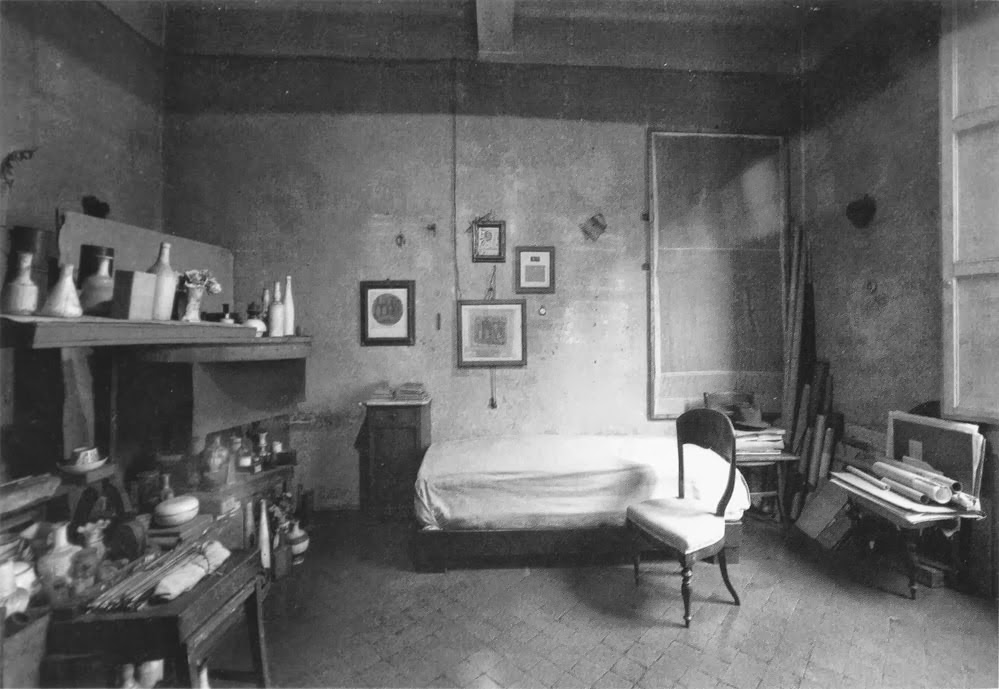
Giorgio Morandi’s bedroom
On the other hand, Jackson Pollock’s large-scale canvases and energetic action-painting technique required the space afforded by a renovated barn. While his wife, Lee Krasner (American, 1908–1984), painted in an upstairs bedroom in their home in East Hampton NY, Pollock (American, 1912–1956) painted in his studio and sometimes outdoors, often climbing a ladder and dropping paint onto a giant canvas on the ground. He worked accompanied by jazz records played at high volume.
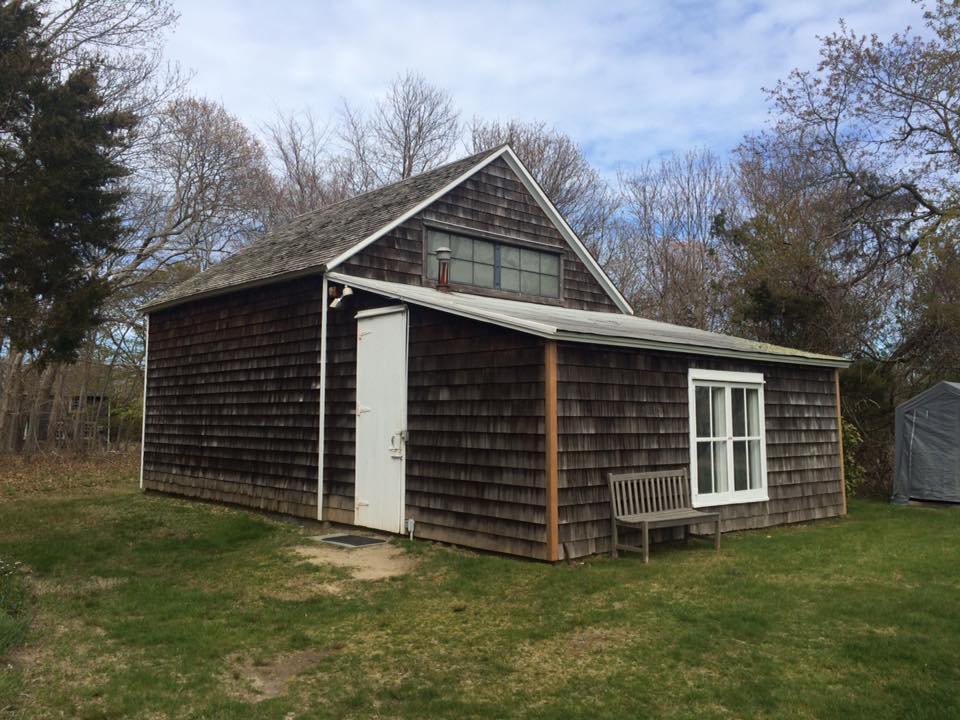
Jackson Pollock’s studio 
Floor of Pollock’s studio 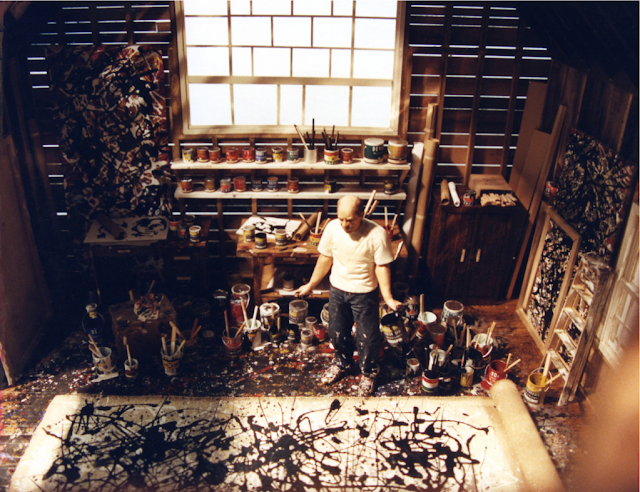
Jackson Pollock at work
Rosa Bonheur (French, 1822–1899) was widely considered to be the most popular and widely-known artist — male or female — of the 19th century. She was the first female artist to be awarded the Legion of Honor and, at the height of her fame, she was the darling of royalty, statesmen and celebrities on both sides of the Atlantic. Early in her career, as soon as her financial wherewithal permitted, Bonheur purchased the Château de By, 75 kilometers southeast of Paris, and it remained her home for 40 years. Here she set up a studio befitting her stature. As an “animalier,” she produced studies of animals at trade fairs, abattoirs, and circuses, as well as exotics she kept on her own property; she then referred to those studies when painting — often on huge canvases — in her studio.

Exterior of Bonheur’s studio, Chateau de By 
Rosa Bonheur in her garden 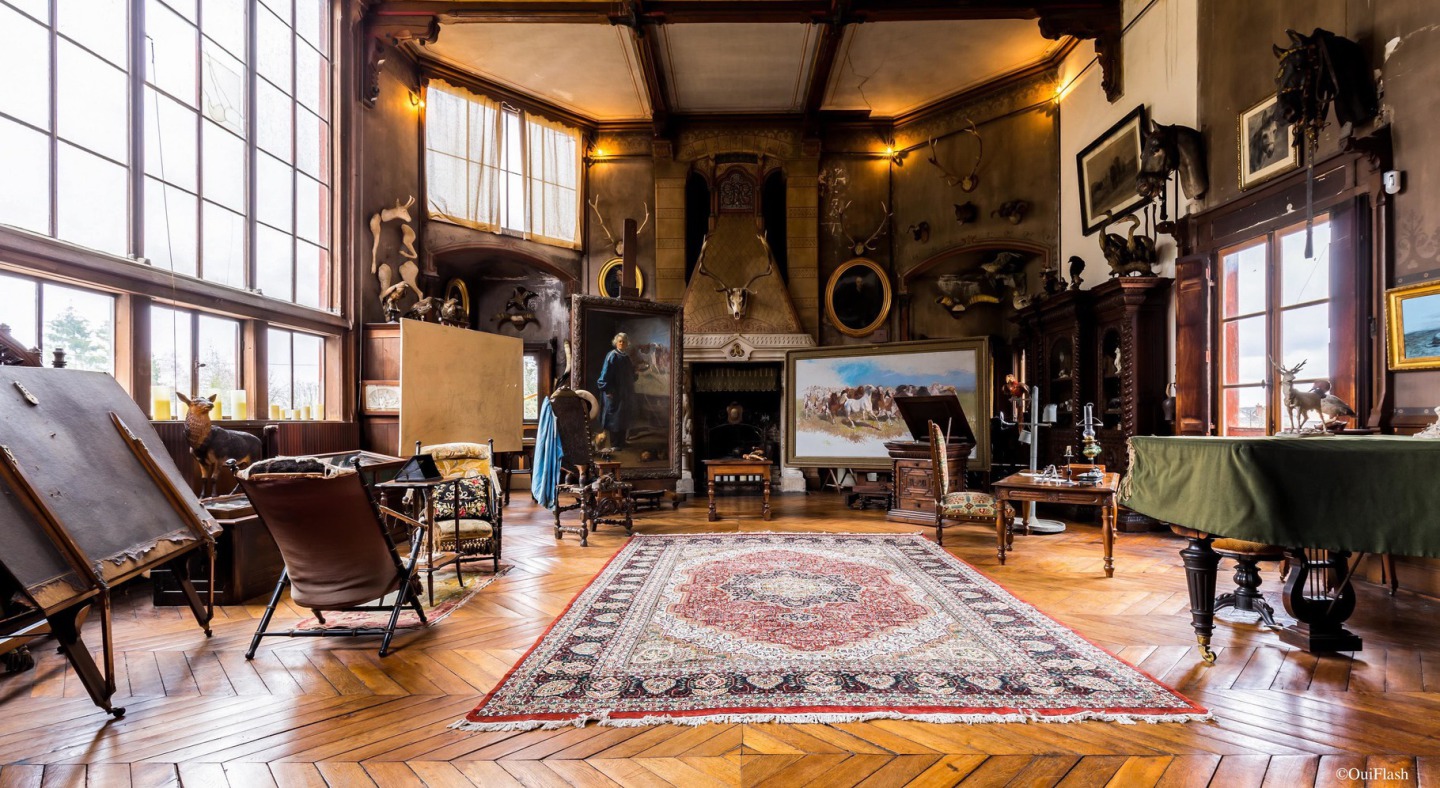
Rosa Bonheur’s studio
The Sarasota Art Museum recently mounted an exhibition, Judith Linhares: The Artist as Curator (November 27, 2021 – April 3, 2022) which considered the abundance of influences that have shaped her artistic practice—from her time in the California Bay Area in the 1960s and 70s, to her studio space, as well as other artists. In addition to a range of her paintings, the exhibition included items from her studio. Collected objects, photographs, and journals paralleled specific imagery and temperaments in her artwork, allowing visitors to imagine how these many widely varied elements were referenced by the artist.
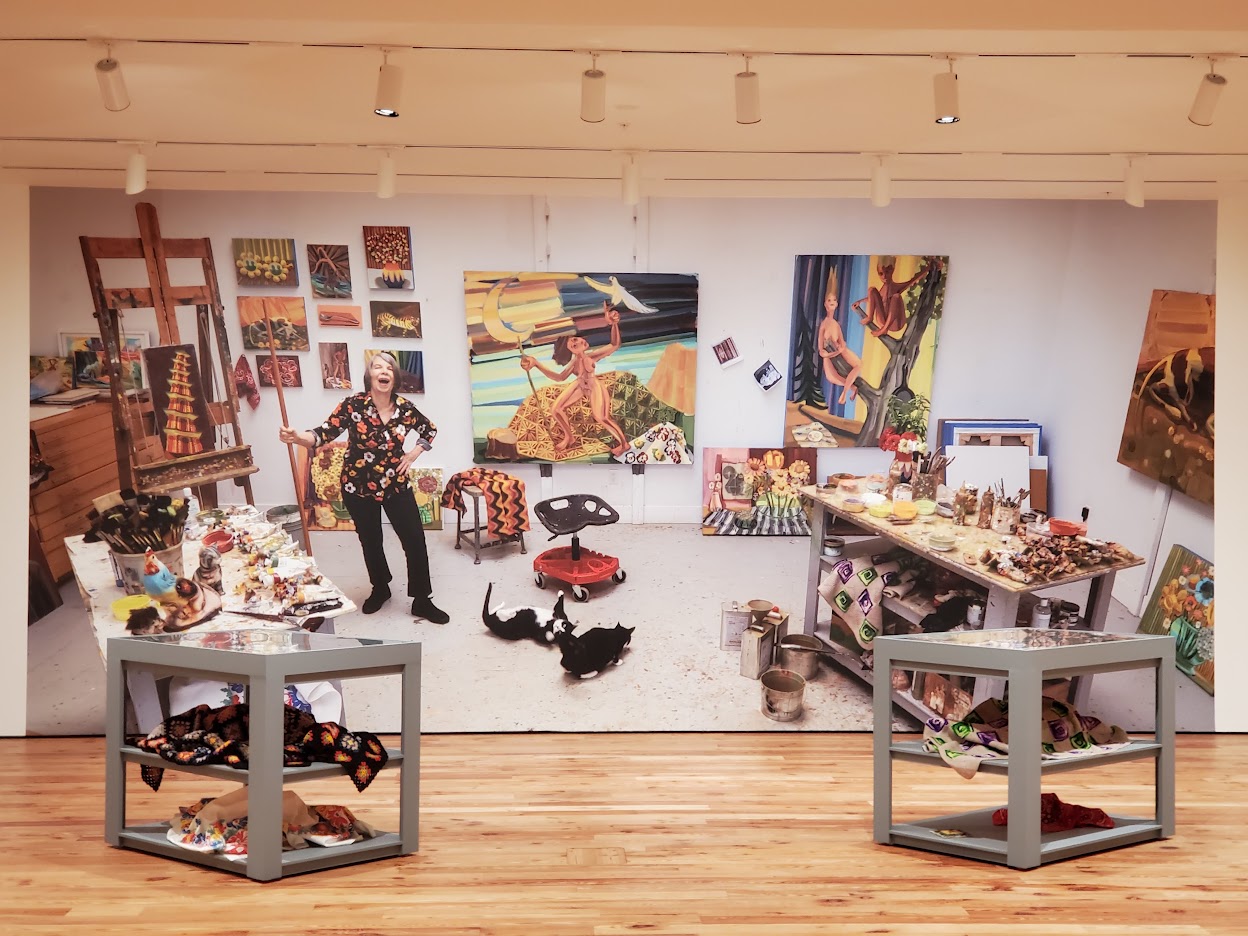
The show demonstrated how Linhares’ creative catalysts go beyond the studio space, recognizing the importance of artist-to-artist communication. She invited five artist-friends to take part in the exhibition, to demonstrate the unique approach, physical processes, and explorations of each.
Large-scale photographic images of the five artists’ individual work-spaces underscored their creative differences and similarities, allowing visualization of their unique processes while reflecting on their common interest in the power of the intuitive process.
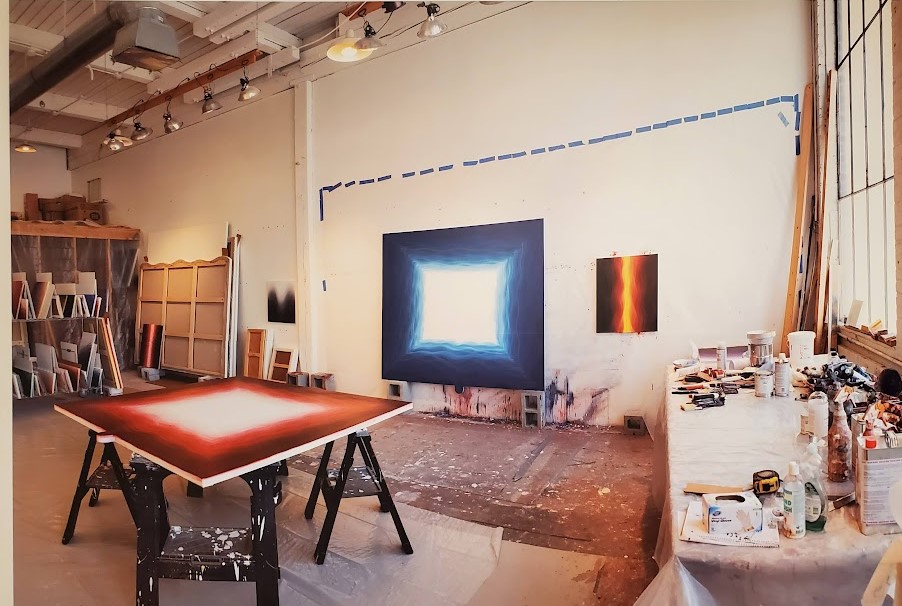
Karen Davie’s studio 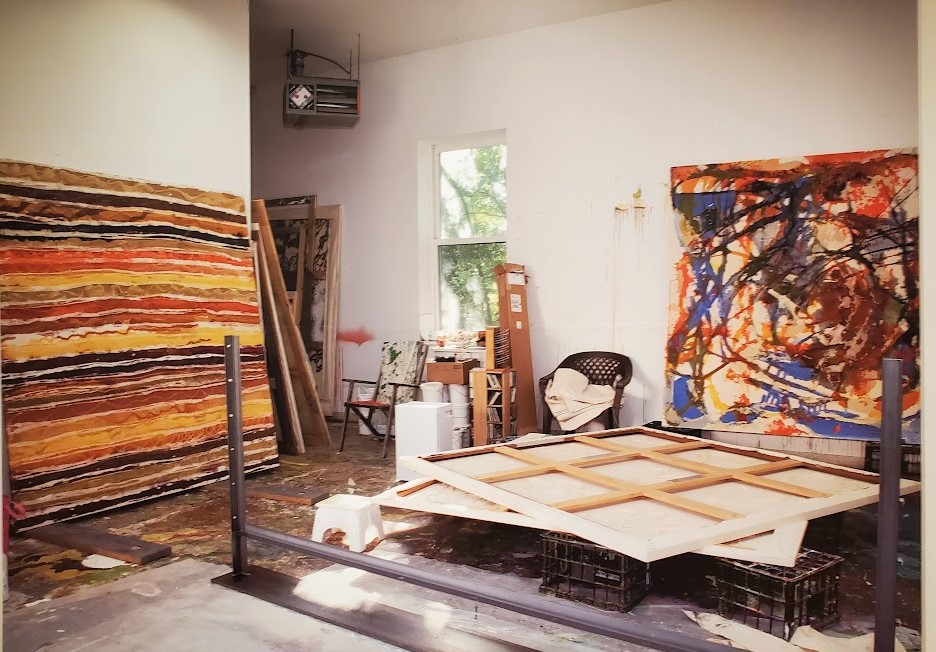
Donna Nelson’s studio 
Mary Jo Vath’s studio 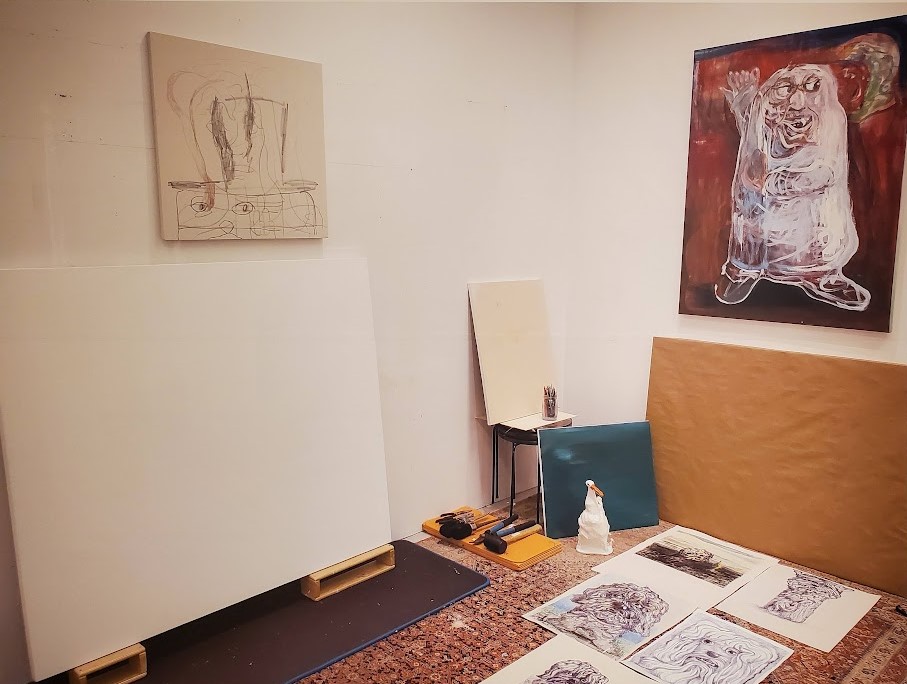
Bill Adams’ studio 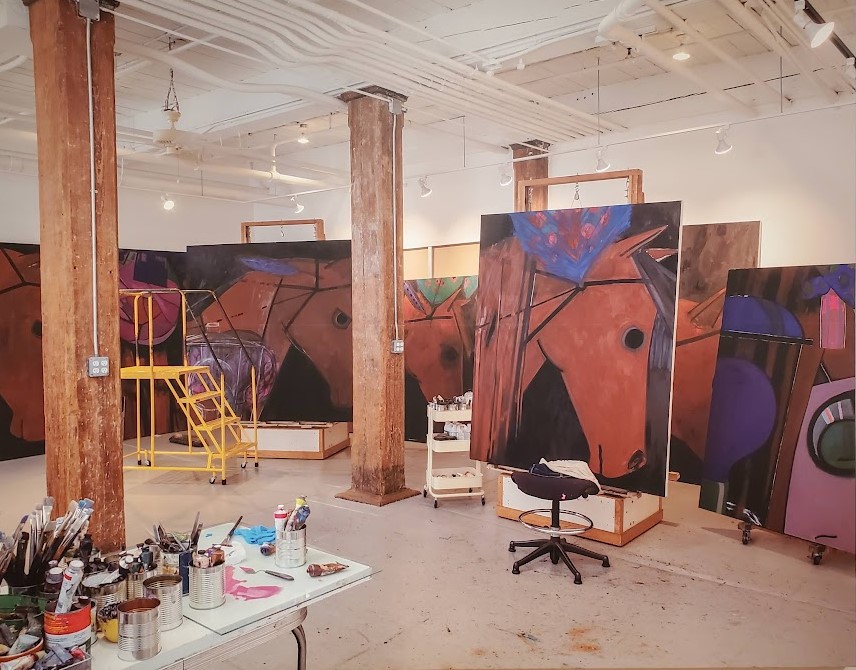
Ellen Berkenblit’s studio
Fortunately, those of us who are interested in touring artist studios have some wonderful options. Many locales around the country have Artist Studio-Tour weekends — just keep an eye on local media or contact chambers of commerce to learn about what’s on, where and when. These tours offer opportunities to meet working artists and see them in their work environments.
Another way to see artists in their element is to find group “ateliers”, where multiple artists have studio space. The Northrup King Building in Minneapolis is an example. This complex of ten buildings was first constructed in 1917 for the Northrup King & Co. seed company. Now renovated and repurposed, the campus houses more than 190 artist studios. The Peninsula Museum in Burlingame CA is another, with 29 studios for professional artists, established with the intention of offering personal interaction with artists.
But I have a fantasy of taking a zig-zaggy road-trip throughout the U.S. to visit the homes and studios of artists who have gone down in history; those whose physical selves have departed, but whose artistic legacies are being preserved. Located in 25 states, some of these sites are are maintained by State and National Park entities, most are overseen by private foundations or art museums.
What follows is a list of all those artists’ homes and studios across the U.S. that are open to the public, organized alphabetically by state and city. (We believe it to be complete. If you know of one that isn’t on the list, please let us know!) Click on the links to learn more about each.
60 Artist Home and Studio Museums in the U.S.
- Taliesin West, Scottsdale AZ
- DeGrazia Gallery in the Sun, Tucson AZ
- Maloof Foundation for Arts And Crafts, Alta Loma, CA
- David Ireland House, San Francisco CA
- Grace Hudson Museum & Sun House, Ukiah CA
- Kirkland Museum, Denver CO
- Bush-Holley House, Cos Cob CT
- Florence Griswold House / Lyme Art Colony, Old Lyme, CT
- Weir Farm National Historic Site, Wilton CT
- Bonnet House Museum & Gardens, Ft. Lauderdale FL
- Ann Norton Sculpture Gardens, West Palm Beach FL
- Albin Polasek Museum & Sculpture Gardens, Winter Park FL
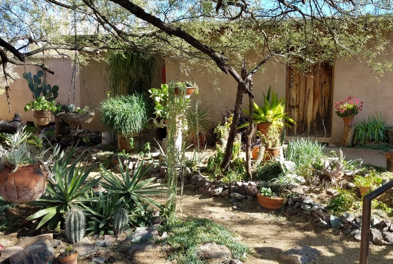
Ted DeGrazia’s courtyard 
Vance Kirkland’s studio & art school 
Albin Polasek in his studio 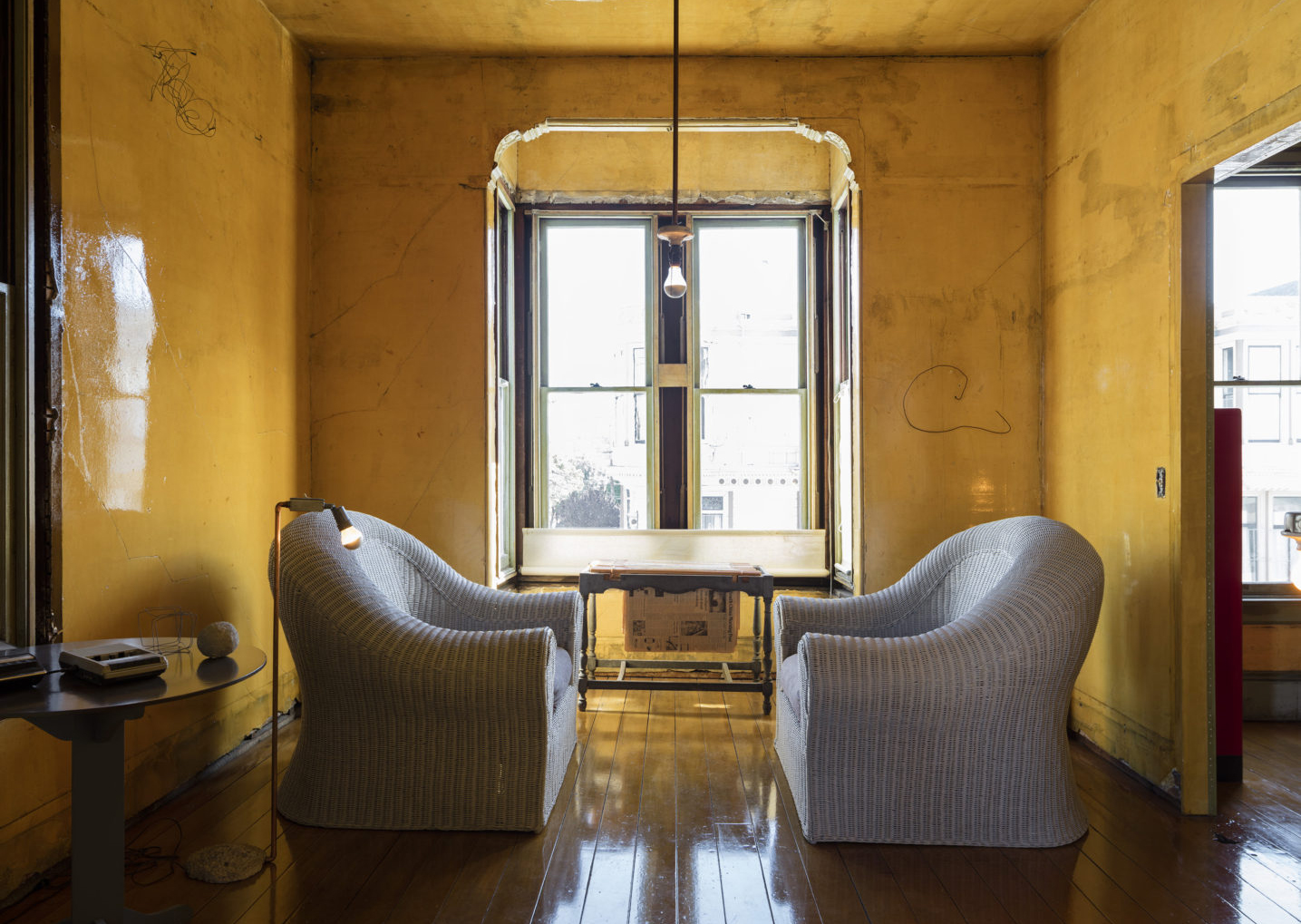
David Ireland House 
Cos Cob art colony studio
- Paradise Garden, Summerville GA
- Grant Wood Studio, Cedar Rapids IA
- James Castle House, Boise ID
- Roger Brown’s Storefront Studio and Home, Chicago IL
- Frank Lloyd Wright Home and Studio, Oak Park, IL
- T.C. Steele State Historic Site, Nashville IN
- Melrose Plantation, home of Clementine Hunter, Melrose LA
- Chesterwood, home of Daniel Chester French, Stockbridge MA
- Norman Rockwell Museum, Stockbridge MA
- Frelinghuysen Morris House and Studio, Lenox MA
- Winslow Homer Studio, Prouts Neck, ME
- Rockwell Kent – James Fitzgerald House & Studio, Monhegan Island, ME
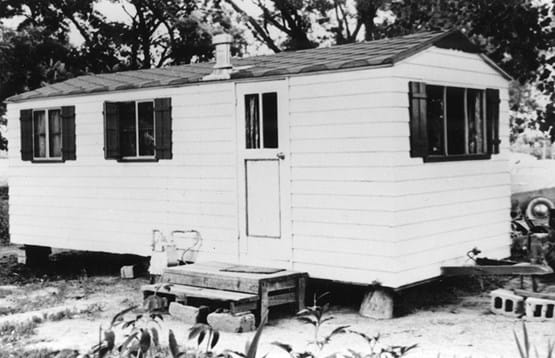
James Castle’s “Cozy Cottage” Trailer studio 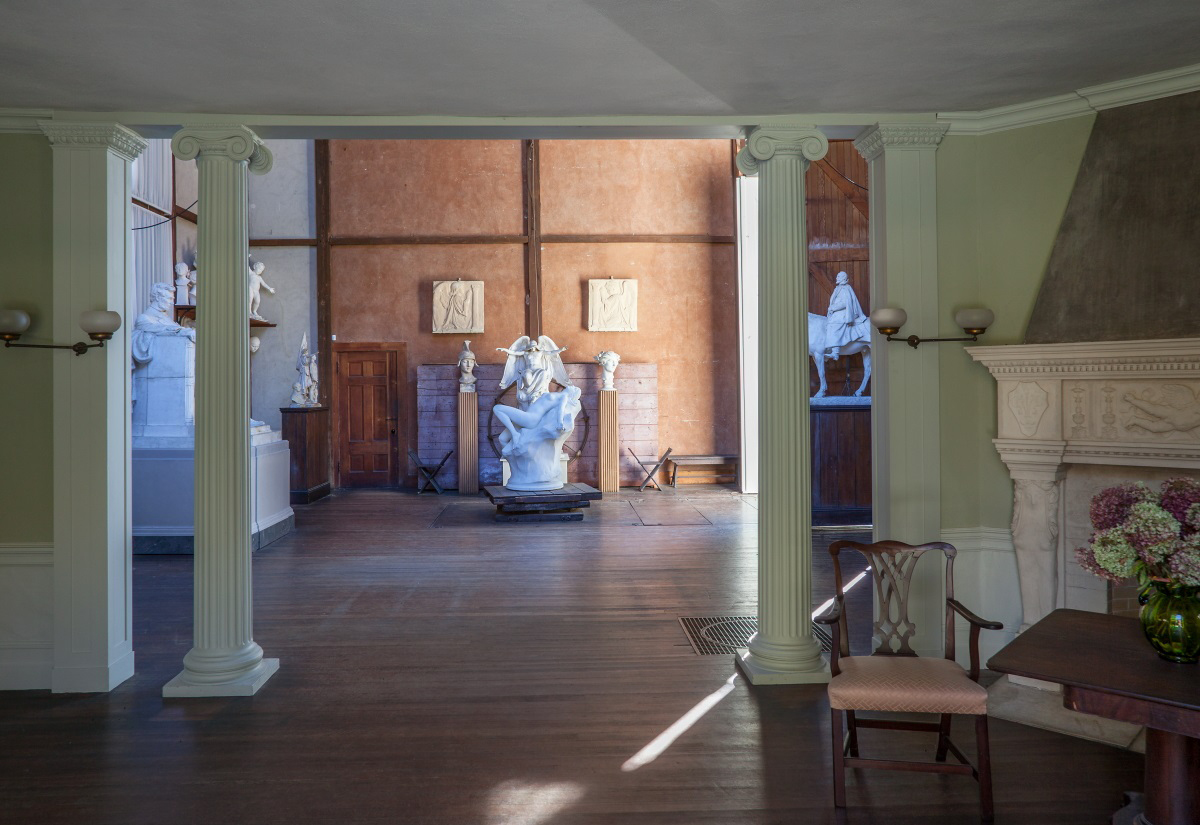
Daniel Chester French’s studio 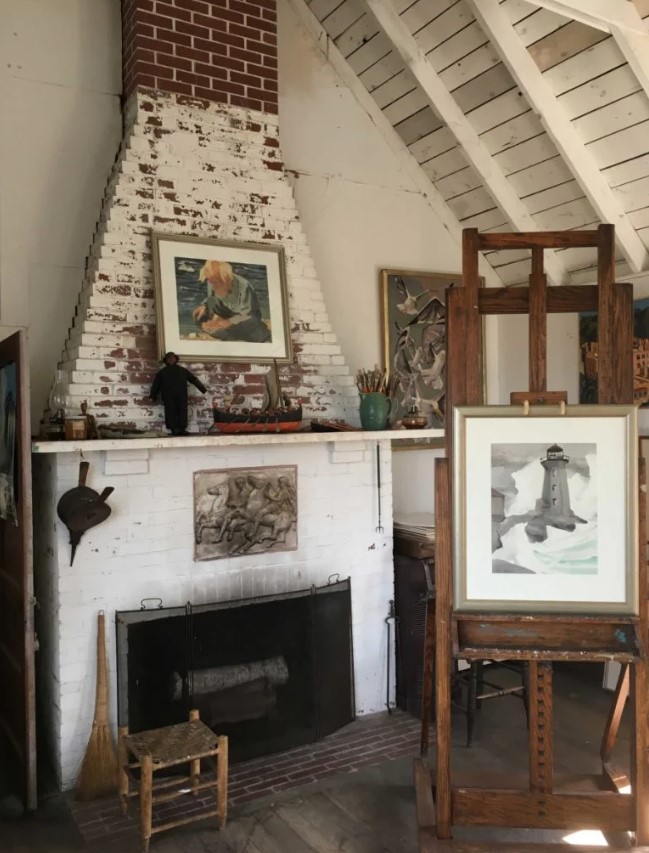
James Fitzgerald’s studio 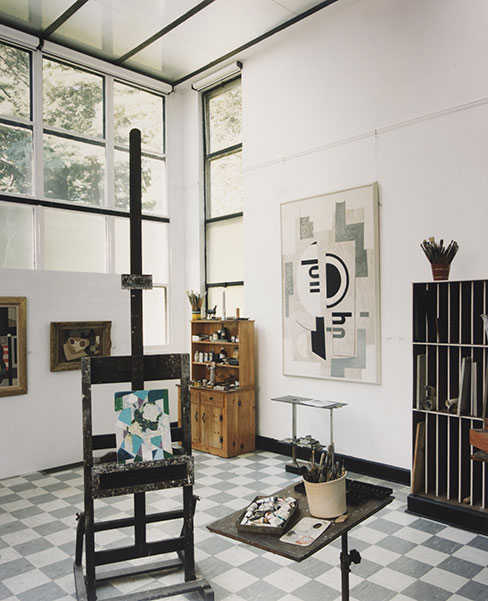
Morris’ & Frelinghuysen’s studio 
Winslow Homer’s studio view
- Saarinen House, Bloomfield Hills, MI
- Alden B Dow Home and Studio, Midland MI
- Thomas Hart Benton Home & Studio, Kansas City MO
- Charles E. Gagnon Museum & Sculpture Garden, Rochester MN
- C.M. Russell Museum, Great Falls MT
- Saint-Gaudens National Historic Site, Cornish NH
- John F. Peto Studio, Island Heights NJ
- Stickley Museum, Morris Plains NJ
- Georgia O’Keeffe Home & Studio, Abiquiu NM
- E.L. Blumenschein Home and Museum,Taos, NM
- Couse-Sharp Historic Site, Taos NM
- Nicolai Fechin home and studio, Taos NM

Georgia O’Keeffe’s home & studio 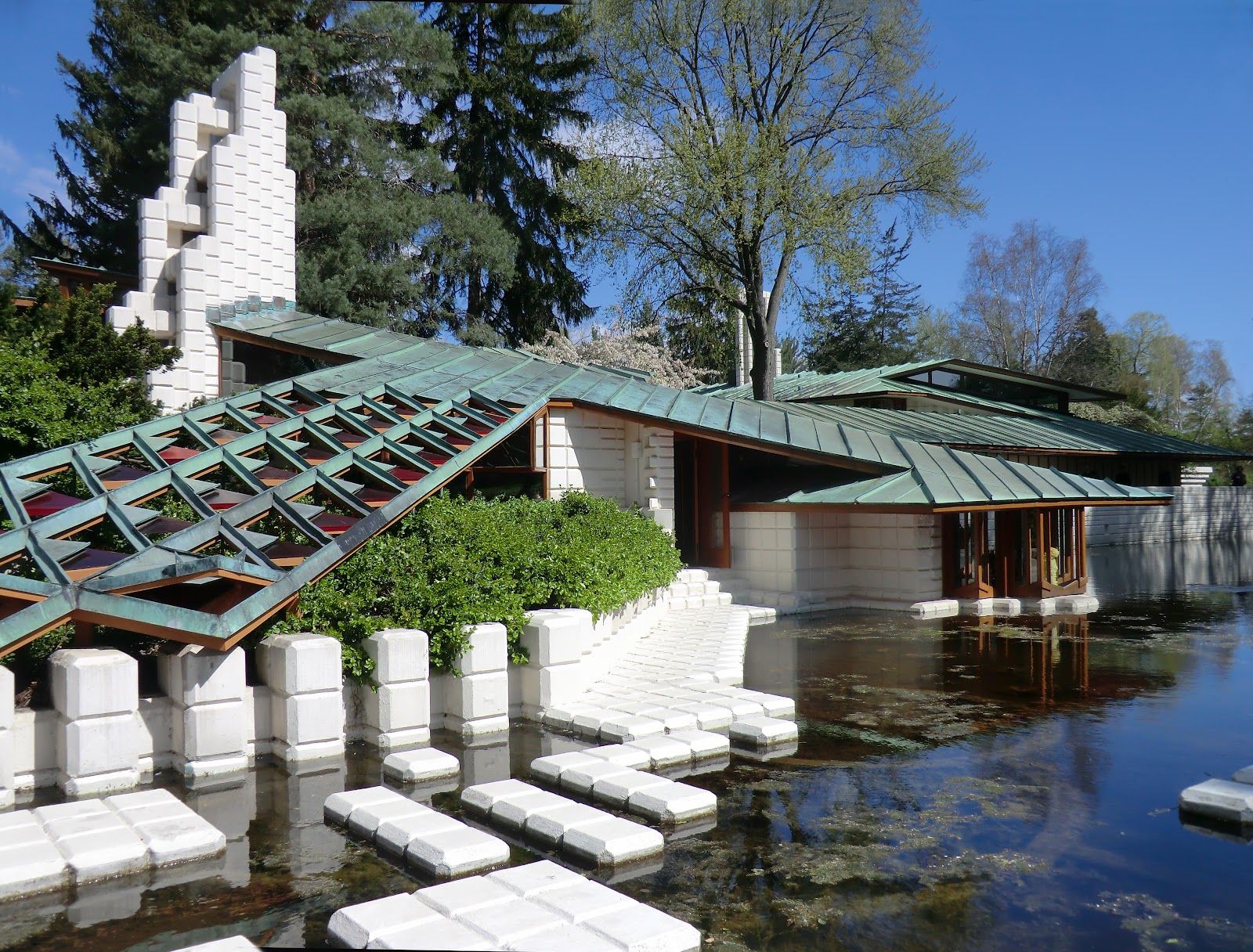
Alden B Dow’s home & studio 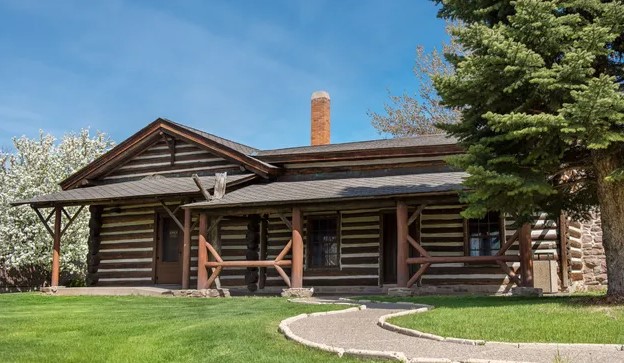
CM Russell’s home & studio
- Thomas Cole National Historic Site, Catskill NY
- Arthur Dove/Helen Torr Cottage, Centerport NY
- Dorothy Riester Hilltop House and Studio, Cazenovia NY
- Pollock-Krasner House, East Hampton NY
- Thomas & Mary Nimmo Moran Studio, East Hampton, NY
- Manitoga / Russel Wright Design Center, Garrison NY
- Ever Rest, Home of Jasper F. Cropsey, Hastings-on-Hudson, NY
- Olana – Home of Frederic Church, Hudson NY
- Noguchi Museum and Garden, Long Island City, New York City, NY
- Judd Foundation, New York City NY
- Renee & Chaim Gross Foundation, New York City NY
- Milton Resnick and Pat Passlof Foundation, New York City NY
- Alice Austen House, Staten Island, New York City NY
- Edward Hopper House in Nyack NY
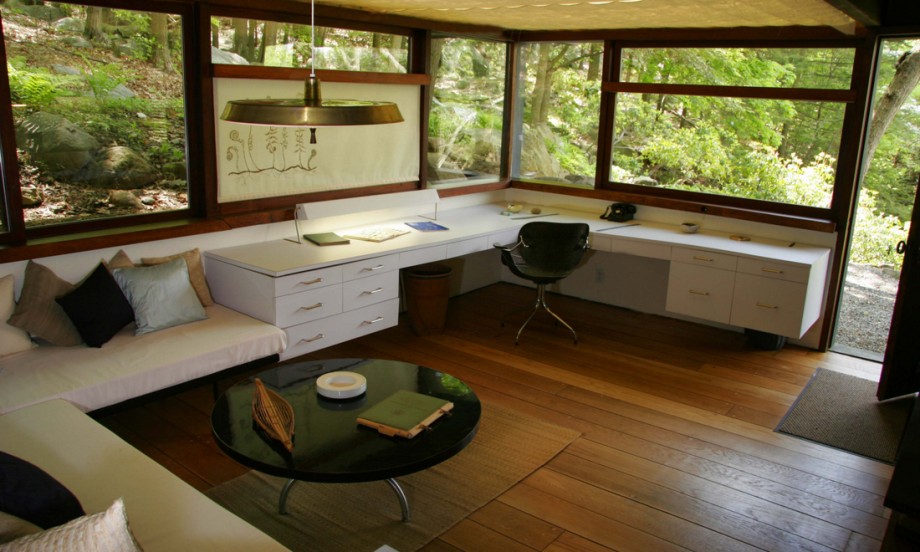
Russel Wright’s studio 
Chaim Gross’ studio 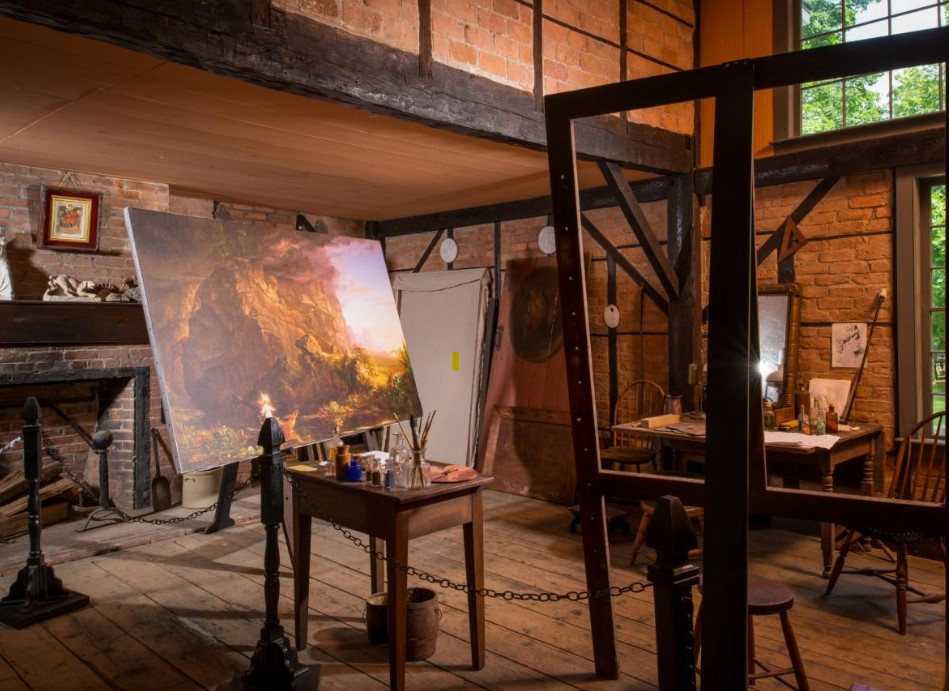
Thomas Cole’s studio 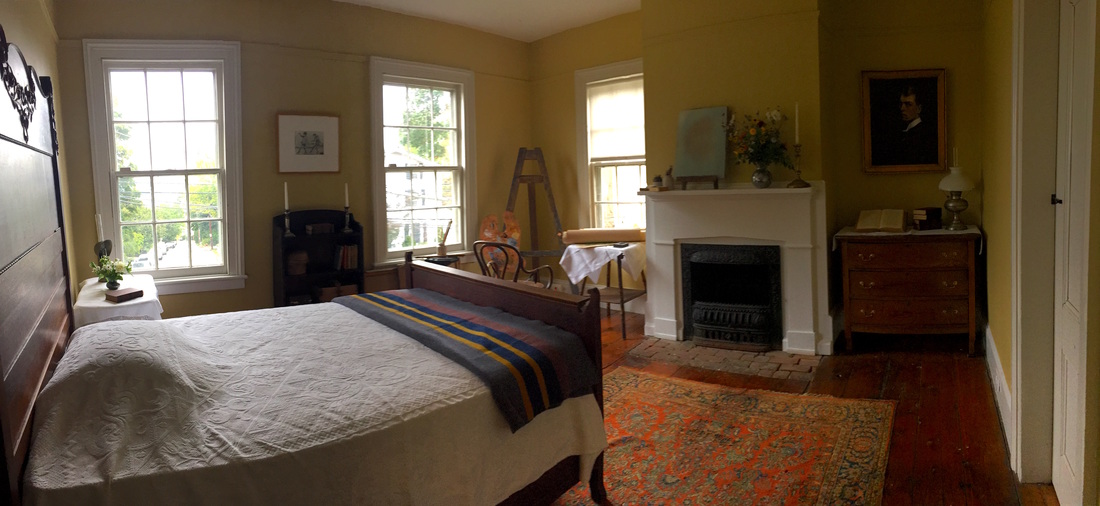
Edward Hopper’s bedroom studio 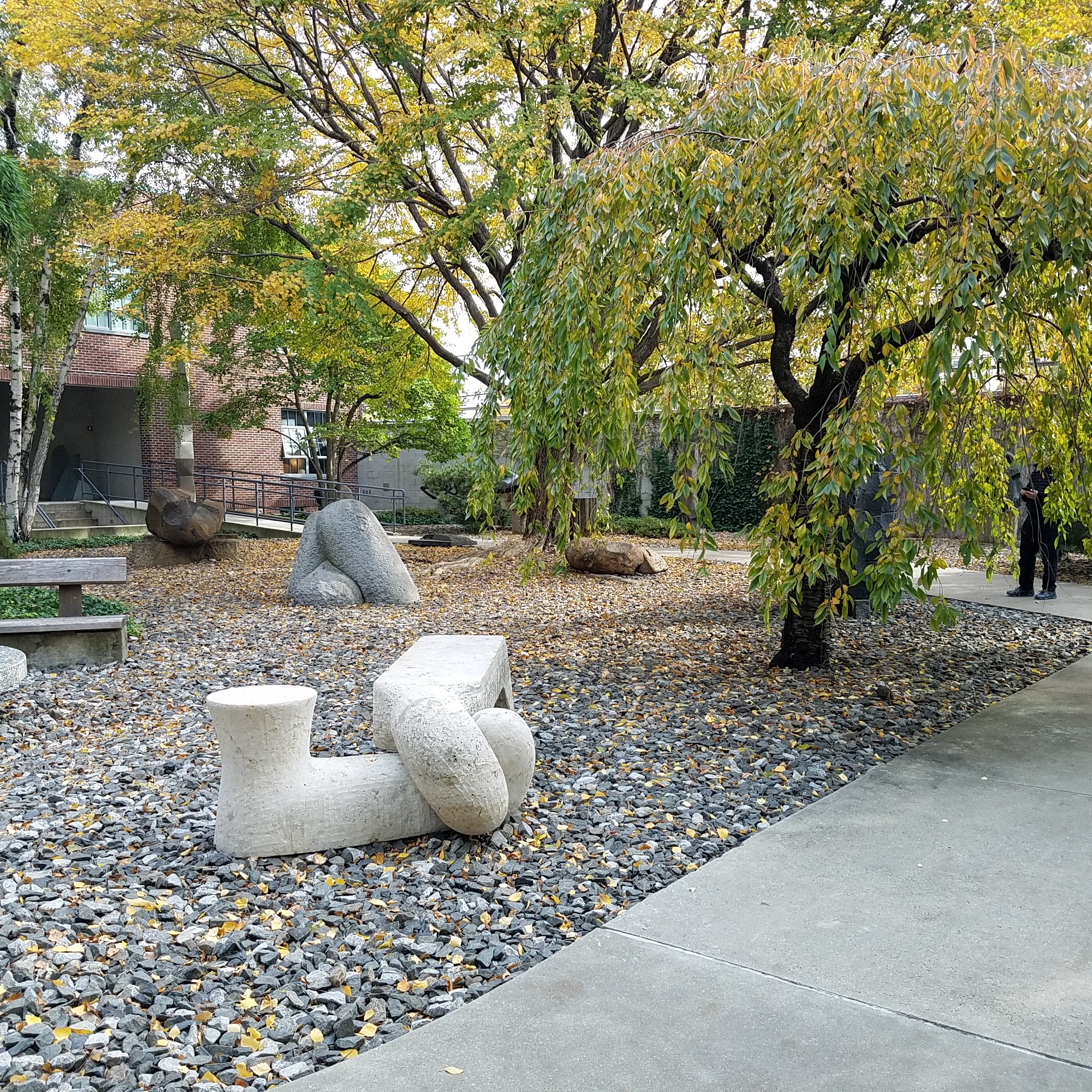
Isamu Noguchi’s studio garden
- Burchfield Homestead, Salem OH
- N.C. Wyeth House and Studio, Chadds Ford PA
- Andrew Wyeth Studio, Chadds Ford PA
- Fonthill Castle, Doylestown PA
- Charles Demuth Museum, Lancaster PA
- The Wharton Esherick Museum, Malvern PA
- Elisabet Ney Museum, Austin TX
- Umlauf Sculpture Garden & Museum, Austin TX
- Gari Melchers Home and Studio, Falmouth VA
- Edward V. Valentine Sculpture Studio, Richmond VA

Andrew Wyeth’s studio 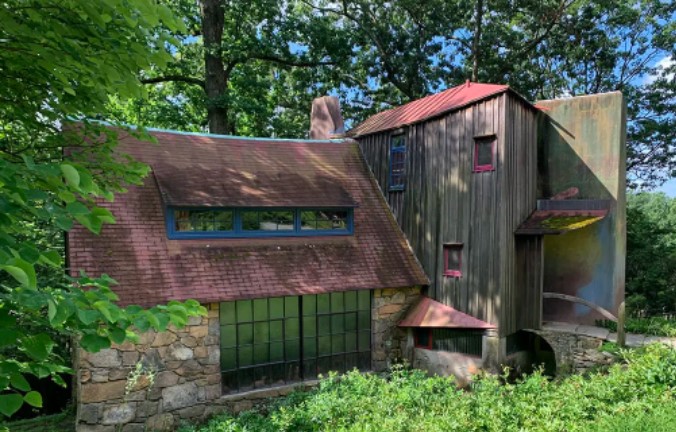
Wharton Esherick’s studio exterior 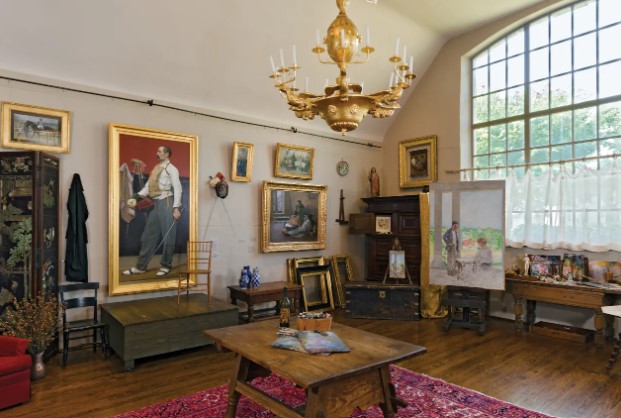
Gari Melcher’s studio
Hmmm … isn’t it time to plan a little trip?
Featured header image: Western artist Nicholas Coleman in his Provo UT studio.
Art Things Considered is an art and travel blog for art geeks, brought to you by ArtGeek.art — the only search engine that makes it easy to discover more than 1600 art museums, historic houses & artist studios, and sculpture & botanical gardens across the US.
Just go to ArtGeek.art and enter the name of a city or state to see a complete catalog of museums in the area. All in one place: descriptions, locations and links.
Use ArtGeek to plan trips and to discover hidden gem museums wherever you are or wherever you go in the US. It’s free, it’s easy to use, and it’s fun!
© Arts Advantage Publishing, 2022
